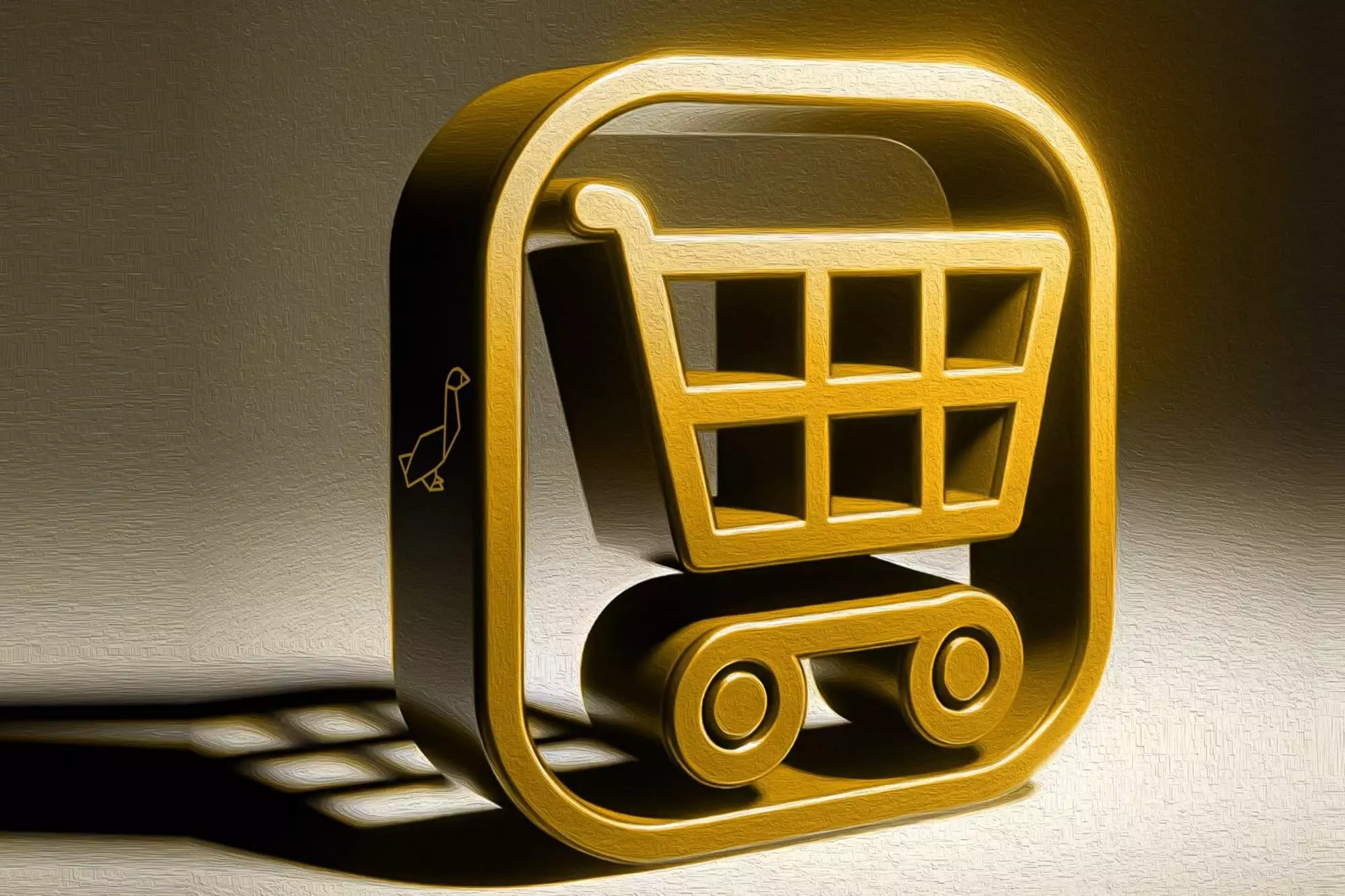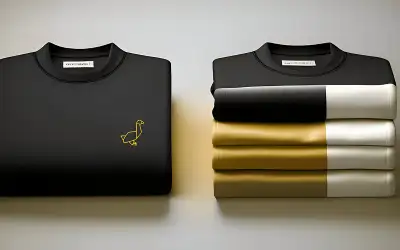The power of the Internet in scaling businesses cannot be overstated, and this is particularly true for artists and crafters. Etsy, a marketplace for creative entrepreneurs, has redefined how craft businesses reach their customers. Starting an Etsy shop might seem daunting, especially if you’re on a tight budget. However, with a bit of creativity and strategy, launching your online store with less than $100 is entirely possible and can be quite rewarding.
Etsy is a global marketplace for unique, creative goods. It provides a platform where crafters can sell their handmade, vintage, or craft supplies directly to customers. Some of the top-selling items on Etsy include jewelry, wedding accessories, home decor, digital artwork, and personalized gifts. Numerous stories of success prove that a well-run Etsy store can indeed become a lucrative business.
Understanding what you’re passionate about and identifying a niche market is crucial. It helps in creating unique products that stand out. This step costs nothing but your time and thought. Ask yourself:
- What am I passionate about?
- What am I good at making?
- Is there a market demand for these products?
Whether you’re aiming to sell handmade items, vintage finds, or unique digital products, this guide will walk you through the essentials of getting your Etsy shop up and running without breaking the bank.
Planning Your Budget To Start An Etsy Shop
Starting an Etsy shop with less than $100 might sound like a tall order, but it’s entirely feasible with meticulous planning and strategic budget allocation. Let’s break down the essentials: budget allocation, inventory, branding, and Etsy fees.
Importance Of Budget Allocation
Allocating your budget wisely is the cornerstone of starting your Etsy shop without breaking the bank. Consider these pointers:
- Prioritize essentials such as your initial inventory and Etsy listing fees.
- Set aside a portion for branding, including your shop name and logo design.
Inventory
Your inventory is what you’ll sell on Etsy, and it needs to be both cost-effective and appealing to shoppers. Here’s how:
- Start small. Choose a handful of items to start selling. This can help manage costs and test what sells best.
- DIY if possible. Handmade items not only add a personal touch but can also be cost-saving.
Branding
A memorable shop name and consistent branding can make your Etsy shop stand out. Spend wisely by:
- Using free design tools for your logo and branding materials.
- Creating a cohesive look across all your listings to build brand recognition.
Etsy Fees
Being familiar with Etsy fees is crucial. They include:
- Listing fees: $0.20 per item to list your product on Etsy for four months.
- Transaction fees: A percentage of the sale price once you make a sale.
By understanding these costs, you can price your items appropriately and keep your expenses within budget.
Starting An Etsy Shop With Less Than $100
Starting an Etsy shop can seem like a daunting task, particularly when you’re on a budget. However, with less than $100, you can effectively set up your shop and start selling. When you want to start an Etsy shop, you must first understand the costs involved. Luckily, Etsy makes it quite affordable to list and sell items on its platform.
Etsy charges $0.20 for each item that you list. This fee is a flat charge, meaning it doesn’t matter what type of product you’re listing, whether it’s a piece of fine art or a handmade crochet doll. The listing fee is the same price. Therefore, you can start your Etsy shop and list up to 500 items with a budget of just $100.

However, it’s important to note that listing your product is only the first step. To sell on Etsy successfully, you need to factor in transaction fees, which are 5% of the selling price, and payment processing fees, which account for 3% plus $0.25 per transaction. As an Etsy seller, you also need to consider shipping costs and the price of materials, if applicable. But with careful planning, your initial investment of less than $100 can go a long way.
Now you have your budget sorted, how exactly do you go about setting up your Etsy shop? Here are the steps to follow:
- Etsy Account: Create an Etsy account. It’s quick, simple, and free. You need an email address, a unique username, and a secure password to set up your account.
- Shop Name: Choose an appealing and unique shop name that aligns with your brand. Your shop name represents your business on Etsy and is how shoppers will recognize you.
- Listing Your Products: Begin to list your items. Ensure you have well-taken photographs and an engaging product description to attract potential buyers. Try to list multiple items to offer variety to shoppers who visit your Etsy shop.
- Payment Method: Decide on how you want to get paid. Etsy offers multiple payment options, including Etsy Payments, which accommodates several payment methods.
- Shipping Options: Determine your shipping methods and prices. Accurate shipping costs are essential to maintaining shopper trust.
- Opening Your Etsy Shop: Once everything is set up, go ahead and open your Etsy shop to the public.
Starting an Etsy shop on a budget requires careful planning. However, don’t rush to list hundreds of items right away. Start small and observe what works best. Remember that making your first sale on Etsy could take time, but don’t lose hope. Persistence is key. With patience, creativity, and effective strategies, your small investment in an Etsy shop can turn into a thriving business venture.
Step-by-step Guide on Setting Up an Etsy Shop
The idea of starting an Etsy store on a shoestring budget might feel overwhelming, but equipped with the right knowledge, you can create a space to sell your items and kickstart your journey in online entrepreneurship. Below is your comprehensive guide:
Step One: Create Your Etsy Account
First, to start on Etsy, you will need to create an Etsy account. It’s straightforward and free. Provide your email address, create a password, and choose a unique username.
Step Two: Start Your Etsy Shop
To open your Etsy shop, click on the ‘Sell on Etsy’ link on the Etsy homepage or head to Etsy.com/sell to start selling on Etsy. This takes you to a welcome page where you can set your shop preferences, language, country, and currency.
Step Three: Choose a Unique Shop Name
Your shop name creates the first impression and is how customers will find you in an Etsy search. Therefore, keep it catchy, unique, and reflective of your brand. Once your first Etsy shop name is settled, you’re ready to start on Etsy.
Step Four: Stock Your Shop
Aim to list a good number of items initially. Remember, there’s a listing fee of $0.20 per item. This fee remains active for four months or until you make a sale. While it’s exciting to have your first Etsy product listed, ensure accuracy and attraction in your product descriptions and photos.
Step Five: Choose Your Payment Method
Etsy Payments is Etsy’s primary way for accepting payments from shoppers. It enables buyers to use various payment methods, including credit cards, debit cards, Etsy Gift Cards, and Etsy Credits. Do note there’s a payment processing fee associated with each sale.
Step Six: Set Up Your Billing Method
To cover your Etsy fees (listing, transaction, processing fees, and possibly Etsy Ads), you should set up a billing method. You can typically achieve this using a debit card or your PayPal account.
Step Seven: Shop Settings And Policies
Etsy provides settings to manage your shop’s privacy and policies, essential for transparency between you and your shoppers. Be clear and concise with your return policies, item details, and expected shipping times.
Step Eight: Start Selling
Once all of this is in place, you’re ready to start selling online. Keep in mind starting on Etsy is just the first step; optimizing for growth hinges on your dedication to analyzing patterns, learning from the Etsy Seller Handbook, and constantly refining your strategies to improve visibility and sales.
By following these steps, you can ensure you’re setting up a successful Etsy store. Keep an open mind and be patient. Make full use of tools provided by Etsy, such as Etsy Ads to promote your shop and the Seller Handbook to provide guidelines and tips. Keep your inventory varied, engage with the Etsy community for insights, and, most importantly, enjoy your journey as an Etsy seller.
Tips To Succeed With A Low Budget
Even on a low budget, there are ways to make your shop stand out. Use natural light and a simple, non-distracting background for your product photos. Tell a story with your product descriptions. Highlight the unique aspects of each item.
Find the sweet spot where the price is acceptable to customers and profitable for you. Utilize social media and other online platforms to promote your shop. Quick responses and resolutions of issues can boost your reputation among customers. Encourage satisfied customers to leave positive reviews.

Simplifying Your Product Line
When you’re ready to start selling on Etsy, the temptation to offer a wide range of products can be overwhelming. However, narrowing your focus and simplifying your product line can set the stage for a more successful shop.
The Benefits of Starting with a Small, Manageable Number of Products
- Less Overhead: Fewer products mean lower initial costs for inventory and listing fees. Remember, Etsy charges $0.20 per listing.
- Easier Management: Managing a smaller inventory is simpler, allowing you to perfect your product listings, shipping process, and customer service.
- Faster Adaptation: With fewer products, it’s easier to adjust based on customer feedback and Etsy’s analytics, ensuring that your Etsy shop remains agile.
Focusing On Quality Over Quantity
- Better Customer Experience: Offering high-quality items leads to better reviews, repeat customers and higher visibility in Etsy search results.
- Stand Out in the Market: Specializing in a particular niche with superior products can make your Etsy store the go-to for those items.
- Efficient Use of Resources: Investing your time and resources into perfecting a select range of products means each one can command a higher price and better reflect your brand’s value.
By focusing on how to start an Etsy shop on a curated selection of products, you can streamline your process, from setting up your shop preferences and managing your Etsy payments to optimizing your shipping costs.
Setting Up: How to Perfect Your Etsy Shop
Opening your Etsy shop with flair doesn’t require a big budget, just some creativity and smart resource use. Let’s explore DIY Branding and how Lil Assistance can help you craft a budget-friendly brand.
DIY Branding
The next step on how to start an Etsy shop is creating a brand for your Etsy shop is like telling a story that resonates with your shopper. Here’s how to ace it affordably:
- Be Resourceful: Use free or low-cost graphic design platforms to develop your logo, shop banner, and product images.
- Consistency is Key: Maintain a consistent color scheme and font style across your Etsy listings and shop elements to establish brand recognition.
- Create a Connection: Your brand should reflect the uniqueness of what you sell on Etsy. Personal touches can transform a shopper into a repeat customer.
Utilizing Affordable Resources for Branding
You don’t need to spend big to look professional; plenty of tools are available:
- Graphic Design Tools: Canva and other free design software can help you create a look that sells.
- Social Media: Utilize platforms like Instagram and Pinterest to showcase your brand aesthetic and draw traffic to your Etsy shop.
- Community Input: Engage with Etsy forums or communities for feedback and ideas.
How Lil Assistance Can Help With Budget-Friendly Branding Solutions
Lil Assistance could be your ace in the hole for kickstarting your Etsy seller journey:
- Branding Advice: Get tips on best design practices tailored for the Etsy marketplace.
- Listing Optimization: Benefit from guidance to ensure your listings pop and resonate with Etsy search algorithms.
- Cost Management: Find out how to maximize every dollar, from setting Etsy shop preferences to managing Etsy fees.
Starting an Etsy shop is an exciting step into entrepreneurship. With a punch of DIY branding magic and a sprinkle of savvy resourcefulness, you’re well on your way to making that first sale.
Resources and Links for Further Reading
To ensure your Etsy adventure is on the right track, myriad resources are available at your disposal. Educational articles in the Etsy Seller Handbook provide in-depth tips on optimizing your store, while online forums like Etsy’s community forums can offer invaluable peer support and advice.
Additionally, platforms like YouTube host numerous tutorials on photography, crafting compelling product descriptions and utilizing social media for promotion. Here are some specific resources to get you started:
- Etsy Seller Handbook: An excellent starting point for any Etsy seller. It covers a broad range of topics, from SEO optimizations to marketing and shop aesthetics. Etsy Seller Handbook
- Canva: A user-friendly graphic design tool that can help you create professional-looking promotional materials and product photos, even on a budget. Canva
- MailerLite or Mailchimp: Email marketing tools that offer free plans can help you start building a newsletter for your shop without any initial investment. MailerLite / MailChimp
Once your shop is up and running, listen to customer feedback and be open to making changes. This could mean tweaking your product range, adjusting prices, or improving your product photos. Continuous improvement is key to long-term success.
Remember, the goal is to start. Don’t worry about having a massive inventory or perfecting every detail. With less than $100, you can lay the foundation of your Etsy shop, learn as you go, and gradually expand your business. Your Etsy journey begins with a single step — or in this case, a single listing. Dream big, start small, and watch your business grow.
Embarking on your Etsy adventure with a limited budget challenges you to be creative and resourceful, but it’s absolutely possible. You can turn your passion into a thriving online shop by strategically planning and focusing on quality over quantity.
Ready to begin? Your Etsy story awaits.



